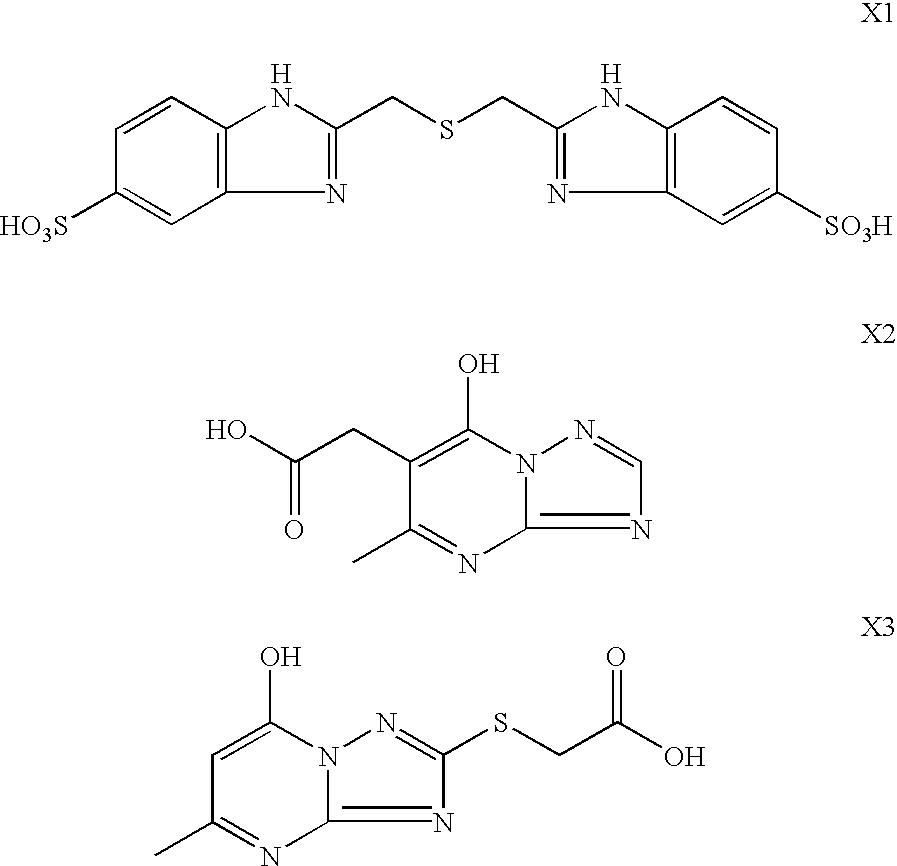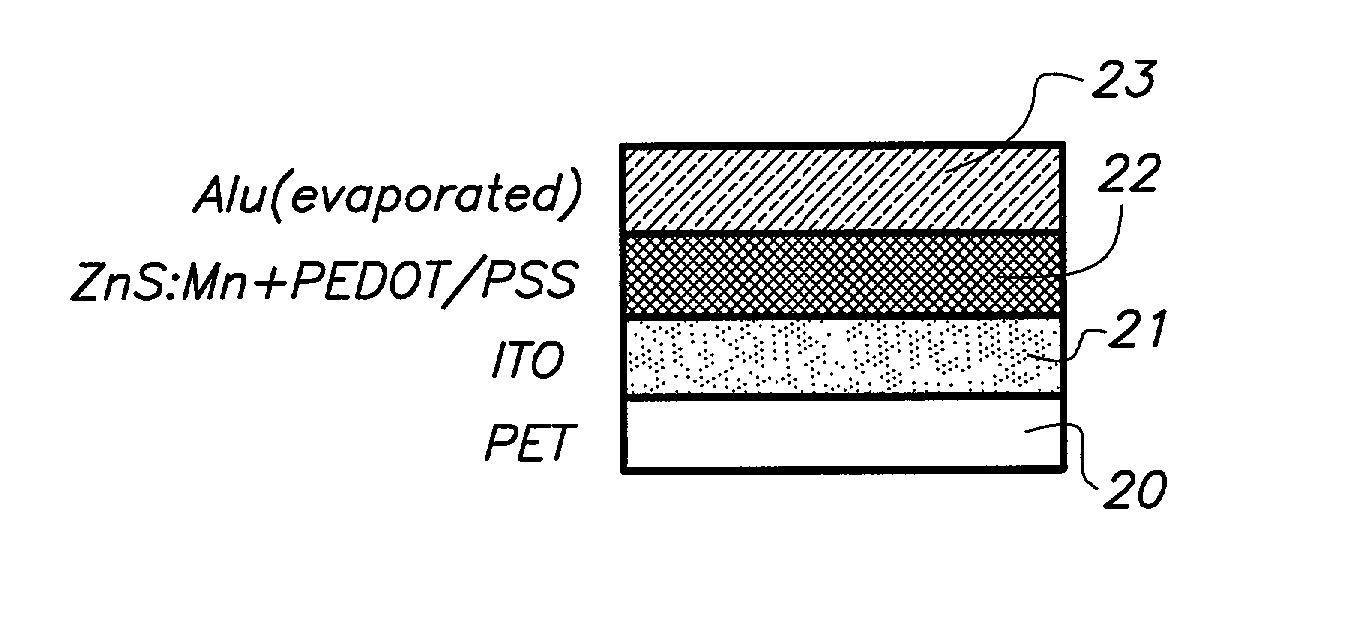Perparation of improved ZnS: Mn phosphors
a technology of phosphors and phosphors, which is applied in the field of phosphors, can solve the problems of difficult to obtain high-efficiency phosphors with more than 1 and drastically decrease the emission efficiency, and achieve the effect of improving the stability of dispersions and better layers
- Summary
- Abstract
- Description
- Claims
- Application Information
AI Technical Summary
Benefits of technology
Problems solved by technology
Method used
Image
Examples
example 1
Preparation of Comparison Zn(Mn)S Dispersion 1
[0069] The following solutions were prepared:
1 Solution 1 Zn(AC).sub.2.2H.sub.2O 471.4 g Mn(AC).sub.2.4H.sub.2O 11 g DW to 1500 ml Solution 2 Na.sub.2S.9H.sub.2O 381.8 g NaOH (50%) 7.7 ml (50%) DW to 1500 ml Solution 3 Zn(AC).sub.2.2H.sub.2O 11.2 g DW to 1500 ml
[0070] The Zn(Mn)S dispersion was prepared as follows:
[0071] To solution 3, held at 50.degree. C. and stirred at 1500 rpm, solutions 1 and 2 were added simultaneously both at room temperature at a flow rate of 500 ml / min.
[0072] 250 ml of thioglycerol was added and the dispersion was diafiltrated through a Fresenius F60 cartridge by using a 5% solution of thioglycerol in water. The dispersion was washed until a conductivity of 0.5 mS / cm was reached. The dispersion was further concentrated to a volume of 1600 ml. This is comparison dispersion 1.
Preparation of Comparison Zn(Mn)S-Dispersion 2
[0073] The following solution was prepared:
2 Solution 4 Zn(AC).sub.2.2H.sub.2O 471.4 g Mn(AC)....
example 2
[0082] Orange-Yellow Light Emitting Double Layer ILED
2.1. Preparation of the Cu.sub.xS- and ZnS:Mn-Dispersion
[0083] The following solutions were prepared:
5 Solution 6 CuCl.sub.2.2H.sub.2O 37.5 g Water to 600 ml Solution 7 Na.sub.2S.9H.sub.2O 123.4 g NaOH (50%) 3.1 ml Water to 600 ml Solution 8 Thioglycerol 50 ml Water to 800 ml Solution 9 Zn(acetate).sub.2.2H.sub.2O 150.4 g Mn(acetate).sub.2.4H.sub.2O 4.85 g Water to 600 ml Solution 10 5-methyl-1,2,4-triazolo- 60 g (1,5,-a)-pyrimidine-7-ol Water to 800 ml
[0084] The Cu.sub.xS-dispersion was prepared as follows:
[0085] To solution 8, stirred at 1500 rpm at room temperature solutions 6 and 7, both held at room temperature, were added simultaneously at a flow rate of 500 ml / min. This is the predispersion G1 comprising Cu.sub.xS-particles.
[0086] The ZnS:Mn-dispersion was prepared as follows:
[0087] To solution 10, stirred at 1500 rpm at 80.degree. C. solution 9 and 7, both held at room temperature, were added simultaneously at a flow rate ...
example 3
[0096] Orange-Yellow Light Emitting ILED with Mixture of ZnS:Mn and PEDOT / PSS
[0097] This example demonstrates that instead of Cu.sub.xS, PEDOT / PSS as the p-type semiconductor can be used.
[0098] To 10.5 ml of dispersion G2 (ZnS:Mn), 9.5 ml of a 1.2% PEDOT / PSSH-complex dispersion was added. This is dispersion J. This dispersion was further used to construct a LED device similar to example 2 but according to a single luminescent layer version instead of the double layer version of example 2.
[0099] FIG. 1 illustrates the construction of the ILED designed according to this example 3.
[0100] At a forward bias electroluminescence could be observed from 4 V, and at reverse bias electroluminescence could be observed from -9 V. The I / V curve is illustrated in FIG. 2.
PUM
| Property | Measurement | Unit |
|---|---|---|
| thickness | aaaaa | aaaaa |
| thickness | aaaaa | aaaaa |
| flow rate | aaaaa | aaaaa |
Abstract
Description
Claims
Application Information
 Login to View More
Login to View More - R&D
- Intellectual Property
- Life Sciences
- Materials
- Tech Scout
- Unparalleled Data Quality
- Higher Quality Content
- 60% Fewer Hallucinations
Browse by: Latest US Patents, China's latest patents, Technical Efficacy Thesaurus, Application Domain, Technology Topic, Popular Technical Reports.
© 2025 PatSnap. All rights reserved.Legal|Privacy policy|Modern Slavery Act Transparency Statement|Sitemap|About US| Contact US: help@patsnap.com



